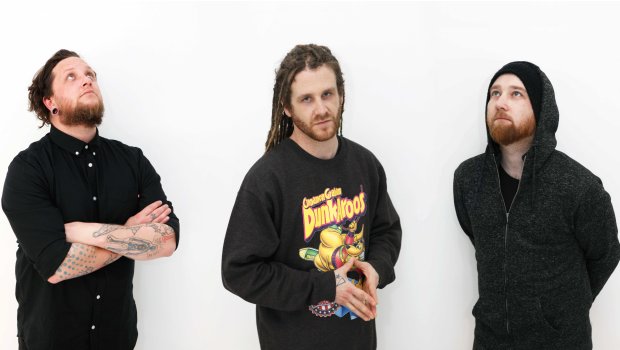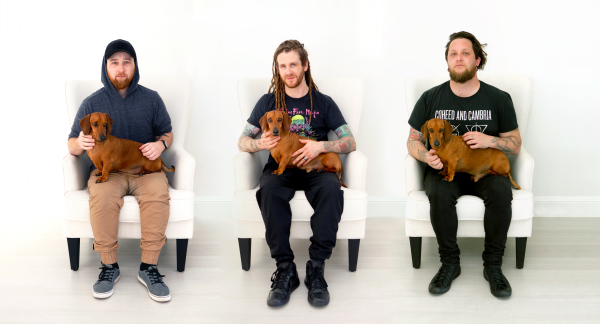2020 seems to have been a banner year for New Zealand music with a progressive bent. The long-awaited City of Souls debut finally arrived. Coridian released the penultimate chapter of their Elements series, and it’s the longest and most impressive so far. Pencarrow have followed up their debut with an album exponentially better than that. Outside In’s Karmatrain has been internationally lauded. Five of the series of six singles from Domes were released this year (with the last dropping at the beginning of this month). In a more extreme vein, Ulcerate’s latest is being touted again and again as one of the greatest tech death albums released this year. I could keep going, but it’s easier just to say that this year seems to be a particularly good one. And, of course, Of Valleys and Mountains by Pull Down the Sun is definitely part of that. Here’s an interview with that band’s Koert Wegman.
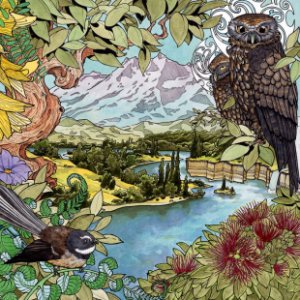 Does it feel like an exceptional year for New Zealand music in Aotearoa, or does it merely appear that way for those of us on the other side of the world?
Does it feel like an exceptional year for New Zealand music in Aotearoa, or does it merely appear that way for those of us on the other side of the world?
I would say that it’s absolutely an exceptional year for New Zealand music, and not just on the rock/metal side of things. The music scene here in Aotearoa is a pretty tight knit community, with a lot of bands and artists pulling up and helping each other. There is so much support within genres and everyone sort of works to the code of “it only takes one band or artist to open the flood gates”. We are all very resilient and it would take more than a global pandemic to dampen the progress that has been made by the amazing bands that you have mentioned.
Alien Weaponry definitely shone a spotlight on Aotearoa, and created a real interest in the history and culture of our country. Do you feel like they’ve provided a wave others can ride on? While you’ve not necessarily incorporated Te Reo Māori in your lyrics, the track titles are for the most part in the Māori language. At one point, this may have worked against attracting an international audience. That’s definitely no longer the case, but do you think about how much they might be understood by listeners outside Aotearoa?
Having bands like Alien Weaponry, Ulcerate and Devilskin open up the blinds to New Zealand has been great. Those bands are doing wonderful things in their own rights and they are pulling the world’s eyes towards what other hidden gems might be lurking down here.
When it comes to the use of Te Reo, while naming our songs, we wanted that perfect mix of mystery and understandability. I think it’s any artist’s duty to make the listener research or dig a bit deeper, so being of Māori decent we thought why not offer the listener the chance to learn and look into the meanings of these song names, and try to decipher how we approached those meanings with English lyrics.
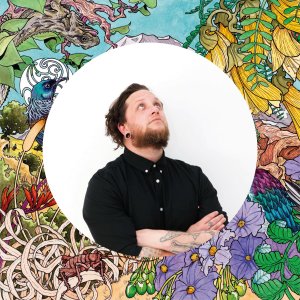 ‘Decipher’ is the right choice of word, as many Māori words have multiple meanings, and without context, it can be difficult to know which meaning is intended. For instance, the most common meaning for ngaro is probably missing, lost or hidden, but that didn’t seem to be the most appropriate for Ngaro. Another meaning is ‘fly’ (the insect), and that made more sense to me. But in keeping with the remainder of the album, it could perhaps even have been hinting at Wāhi Ngaro – the (hidden) spirit world – or even whare ngaro – the point where a family line ends. Is it deliberate to not give too much information, leaving the listener to take what meaning they want or feel?
‘Decipher’ is the right choice of word, as many Māori words have multiple meanings, and without context, it can be difficult to know which meaning is intended. For instance, the most common meaning for ngaro is probably missing, lost or hidden, but that didn’t seem to be the most appropriate for Ngaro. Another meaning is ‘fly’ (the insect), and that made more sense to me. But in keeping with the remainder of the album, it could perhaps even have been hinting at Wāhi Ngaro – the (hidden) spirit world – or even whare ngaro – the point where a family line ends. Is it deliberate to not give too much information, leaving the listener to take what meaning they want or feel?
It is definitely deliberate. We are all fans of bands that leave a lot to the listener to figure out or take what they need from the music and themes. We have learnt that everyone has a view on things but not everyone shares the same view. So for us, having a bit of mystery keeps things interesting for the listener, and gives them the option to take what they are feeling and project it onto our music.
One thing that struck me immediately and particularly was how quickly all the tales from Māori mythology we learnt in primary school came flooding back. Even your name seems to recall these. Is the band name related to the story of How Māui Slowed the Sun?
Definitely. I was always fascinated by the stories and myths of Māui as a child and was lucky enough to have other Māori legends passed down to me that weren’t taught in schools. Pull Down the Sun started as a side project to house riffs and themes that wouldn’t fit into the realm of my previous band and as an excuse to jam with some of my best friends. So at the time of naming, I didn’t know where or what it would end up as, but I wanted a powerful name that could be applied to whatever concept or style we would write.
Speaking of concept, even the artwork seems to evoke the same myths as the track titles. I mention in my review the battle between Tāne and Whiro (Tāne-mahuta and Whiro-te-tipua, whereupon Tāne brings back to the forest the birds and insects. The wētā features in the artwork of course, but the focal point of the (amazingly detailed, and quite beautiful) artwork are the birds – all themselves which have well known links to Māori mythology. How much of a brief was Chris Panatier given when creating the artwork?
As Chris is living in the US, we were only able to chat and pass on ideas through email. With part of the concept being locally based, we had only sent him some images and filled him in on history of the wider Whanganui region as well as some of the story we were trying to tell with the music. It was a scary thought to have someone with no ties to us have such a big part in the physical representation of our music but as we are huge fans of his art, we had full faith that he would create something magical. What came back absolutely blew our minds and really was the last piece of the puzzle that is Of Valleys and Mountains.
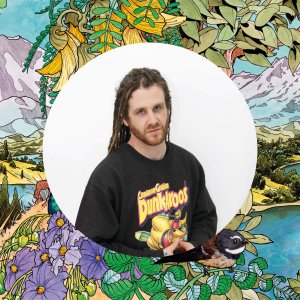 Yeah, definitely. I can’t help but envisage and associate the artwork with the music. And it all seems perfect. For example, the fantail (piwakawaka). I don’t know many Kiwis who don’t associate the bird with death, and many still believe it to be bad luck if one comes inside. This is, of course, due to that bird’s association with Māui’s rather gruesome eventual demise. The wood pigeon (kererū) is also associated with Māui, as he was said to be the reason for its colourful appearance, after he assumed the form of the bird to follow his mother into the Underworld. The morepork (ruru) is also strongly associated with the Underworld in Māori mythology, being either a harbinger of death, or a guardian angel. And, as some of the most vocal of birds, the tui were messengers to the gods. As tui can imitate human speech, they were sometimes tamed and taught to say mihi (greetings) and inoi (prayers). So, for me, the birds seem to represent the songs on the album. For example, even if they are not, I associate the ruru with Kēhua and the tui with Inoi.
Yeah, definitely. I can’t help but envisage and associate the artwork with the music. And it all seems perfect. For example, the fantail (piwakawaka). I don’t know many Kiwis who don’t associate the bird with death, and many still believe it to be bad luck if one comes inside. This is, of course, due to that bird’s association with Māui’s rather gruesome eventual demise. The wood pigeon (kererū) is also associated with Māui, as he was said to be the reason for its colourful appearance, after he assumed the form of the bird to follow his mother into the Underworld. The morepork (ruru) is also strongly associated with the Underworld in Māori mythology, being either a harbinger of death, or a guardian angel. And, as some of the most vocal of birds, the tui were messengers to the gods. As tui can imitate human speech, they were sometimes tamed and taught to say mihi (greetings) and inoi (prayers). So, for me, the birds seem to represent the songs on the album. For example, even if they are not, I associate the ruru with Kēhua and the tui with Inoi.
The beauty of it is that it is all down to interpretation. Some of the reasons those particular birds were used was because they could fit and align with numerous tracks on the album. There were a few other birds and animals that were considered but we felt they would be too obvious and would take away from the intertwined narratives.
Those intertwined narrative are one thing I really love about the album. And within those narratives, the story that is told is far more comprehensible than a lot of so-called concept albums. The sequencing and flow is just perfect, too. The way songs segue into each other, and reflect back upon common themes and motifs, both musically and lyrically, is all terribly well thought-out. It seems like it must have taken quite some time to get to this stage. How long was it from beginning to end?
From initial idea to album in our hands was roughly around six years. It got to the point where we took it as far as we could without being silly and where we all came together at a place we were all happy. As songwriters and storytellers, we tend to think all over the show and that can be a blessing and a curse in terms of trying to get something to the point of completion. So we really took the time to flesh everything out as best we could and then find the right people to mix and master the album to tie it all together for the listener. Zorran Mendonsa has done an outstanding job on the mix and really helped make the album sound as powerful as the themes and concepts. As Zorran is excellent at both, we were also planning to have him master but due to time constraints we enlisted Forrester Savell to add the last coat of polish. These two heavyweights really compliment each other and the final product speaks for itself.
It does, and it speaks powerfully. One of the first things I did after listening was seek the opinion of a friend who has no ties to Aotearoa. I wasn’t sure if the album was powerful for me, because I could recognise the mythology that is drawn upon, and would have more of an idea of what the Māori titles might mean or symbolise. Kimzi is of Native American descent, and recalled (in her words) “a legend about what the animals ask of Nature and what they provide to Nature in exchange of those wishes. There is balance between all other animals and Nature. It goes on to the animal of man, and all it does is take and take until one day the Earth tells us, ‘I have nothing left to give’, and that will be the fall of mankind. Some tribes believe that time is closer than most would like to believe (if we don’t make a change). I am interested though if this release is from the perspective of man or Sun (nature). Maybe both? So many emotions are evoked throughout the tracks.”
There are so many things that hit home in your friends words. Between you two, you have cracked open almost everything we are trying to convey. I briefly touched on it before, but there are multiple narratives happening throughout the album. Some of them flow straight through from start to finish and others jump forward and backwards. There are times where it’s the perspective of a character and others where it’s nature’s turn to warn what is following. To kind of answer her question without me going into too much detail (that would take far too long), the songs with lyrics are predominantly from the human perspective and tell the tales of the two stories (the Māori legends of Māui and Tāne; and the struggles between Māori and Tūrehu). The songs without lyrics (Aka, Kēhua, Oro) are there for a couple of reasons. They represent time passing on one hand, and as a warning for what’s happening next from nature’s side.
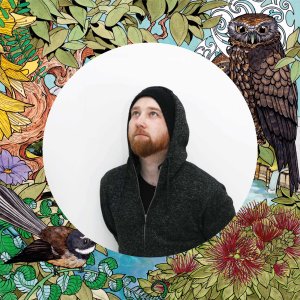 I’m glad you brought up Tūrehu. One song whose potential meaning I didn’t really touch upon too much was Tūrehu. The Tūrehu (or Patupaiarehe) provide a lot of interesting tales and theories, but far too in-depth to have put into my review. There is still some debate on how real these somewhat mysterious pale-skinned inhabitants of Aotearoa might have been. Māori were unique among Polynesians in their knowledge and skill of making linen and nets in a European style, and that was noted contemporaneously by explorers such as Cook. In Māori mythology, they were taught this knowledge and these skills by the Tūrehu. You could write a whole album about the Tūrehu, so I wasn’t willing to guess what the song might have intended to convey. If it were not too simplistic, I’d probably go for another song about haunting or ghosts, as Tūrehu are sometimes described as kēhua. Regardless, the Tūrehu were a tapu people, and the choral section of Tūrehu can send a shiver up my spine. There’s the sense of something sacred there, which is entirely appropriate for a song titled Tūrehu. Is this deliberate? Are you able to tell me more about what the song means?
I’m glad you brought up Tūrehu. One song whose potential meaning I didn’t really touch upon too much was Tūrehu. The Tūrehu (or Patupaiarehe) provide a lot of interesting tales and theories, but far too in-depth to have put into my review. There is still some debate on how real these somewhat mysterious pale-skinned inhabitants of Aotearoa might have been. Māori were unique among Polynesians in their knowledge and skill of making linen and nets in a European style, and that was noted contemporaneously by explorers such as Cook. In Māori mythology, they were taught this knowledge and these skills by the Tūrehu. You could write a whole album about the Tūrehu, so I wasn’t willing to guess what the song might have intended to convey. If it were not too simplistic, I’d probably go for another song about haunting or ghosts, as Tūrehu are sometimes described as kēhua. Regardless, the Tūrehu were a tapu people, and the choral section of Tūrehu can send a shiver up my spine. There’s the sense of something sacred there, which is entirely appropriate for a song titled Tūrehu. Is this deliberate? Are you able to tell me more about what the song means?
I guess the song itself touches more on the concept of the unknown. It means a few different things for a few different people, but it might be easier to leave this one. I could go in a lot of directions trying to answer that question about Tūrehu.
But that is really why I want to ask, and why I think it’s important – even if you can’t answer fully, and I appreciate that it is a huge topic of conversation – to at least address Tūrehu. While everything else regarding Māori mythology, culture and beliefs was familiar for me from what I was taught in primary school, I had never actually heard of Tūrehu, until in my late teens, I worked at the Tokaanu power station for a short while, at their visitor centre. One of the locals told me about the Tūrehu, and I was fascinated that this part of our country’s history is not more well-known or discussed. You mention struggles between Māori and Tūrehu, and yet there was also trading and intermarriage. From what I was told all those years ago, and from what I’ve read since, I’m inclined to believe the Tūrehu did exist. Given how the album draws from Māori mythology, I’m interested to know whether you believe the Tūrehu were a real people. (And, of course, being a myth does not preclude this from also being the truth.)
When we were writing these songs and lyrics, we had all this stuff I wanted to cram in, especially all the Māori myths and legends, etc. My father (who is Māori), taught me a lot of stories, lessons and history that we weren’t being taught in schools, especially around the wider Whanganui/Taranaki/Taupo area and I learnt that we were of both Tūrehu and Māori descent. There is so much of their history that we don’t know, as they were either absorbed by the Māori or abolished. So with that in mind, I tried to craft it all into one with multiple narratives happening at the same time.
I feel like I’m going to have to go back and listen to the album all over again! Not that that is a bad thing, of course. It’s an album that’s easy to go back to, and one you can pick out new things each time, so definitely deserving of multiple listenings! But, from a purely selfish point of view, how long before we hear a follow-up?
Knowing what we know now and learning what we have learnt, it definitely won’t take another six years on a follow up so rest assured. We have a good little bunch of new songs written and because we tend to think far in advance, we have already started fleshing out and floating some ideas on concepts, album names and artwork for a new album. All we can say at this point is that if you like Of Valleys and Mountains, you will be in for a treat.
You can read Nick’s review of Pull Down the Sun’s Of Valleys and Mountains HERE.
LINKS
Pull Down the Sun – Website | Facebook | Bandcamp | YouTube

